WHAT IS AGROFORESTRY?
Agroforestry is when trees and shrubs are purposefully integrated in farming.
why is it important?
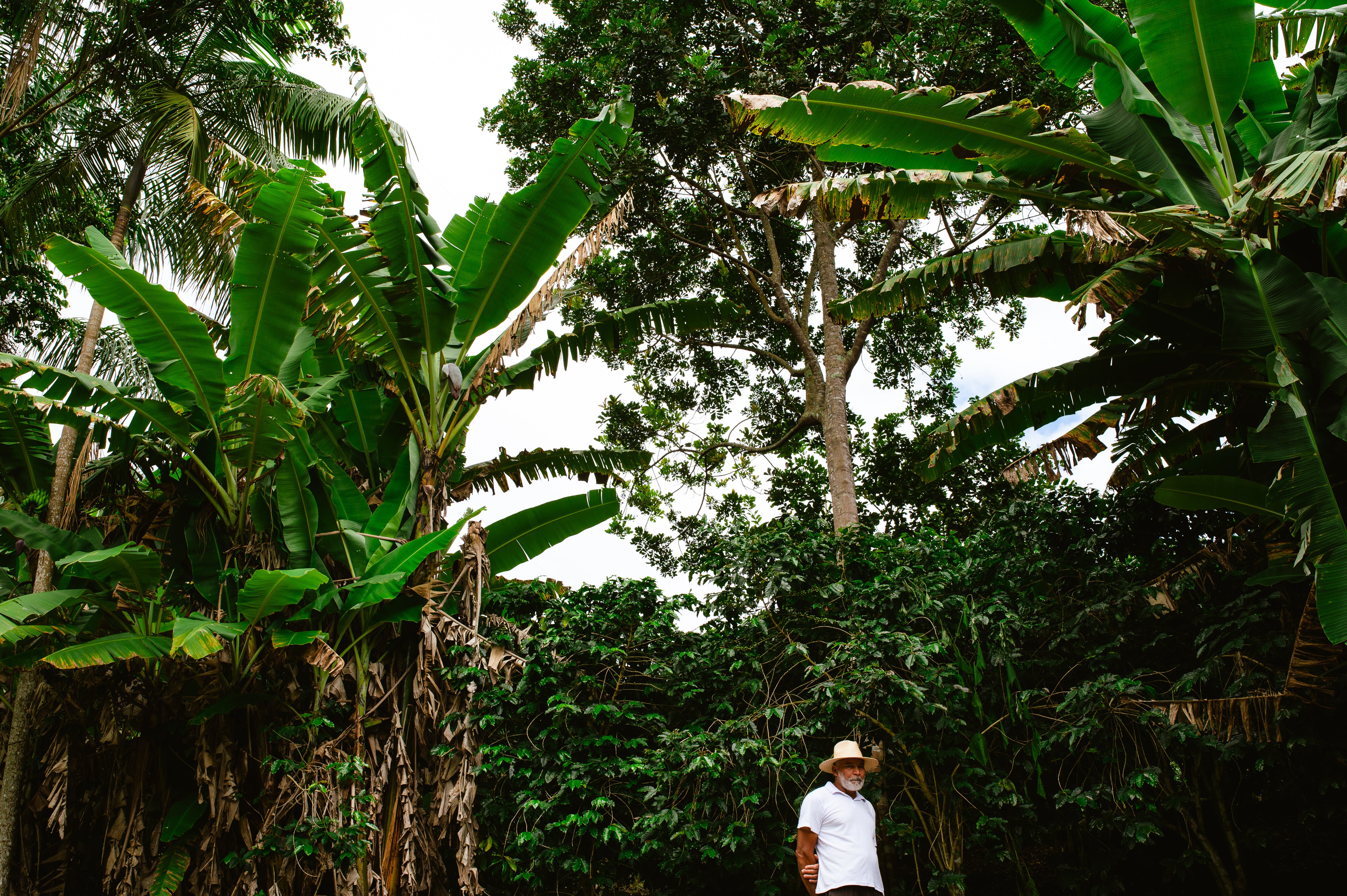
Amazing Agroforests
Agroforests can help farming work in harmony with nature. They can provide so many benefits compared to intensive monocultures. To name just a few, they store more carbon, can support threatened biodiversity, restore degraded soils, and counter the effects of climate change. Keep reading to find out more!
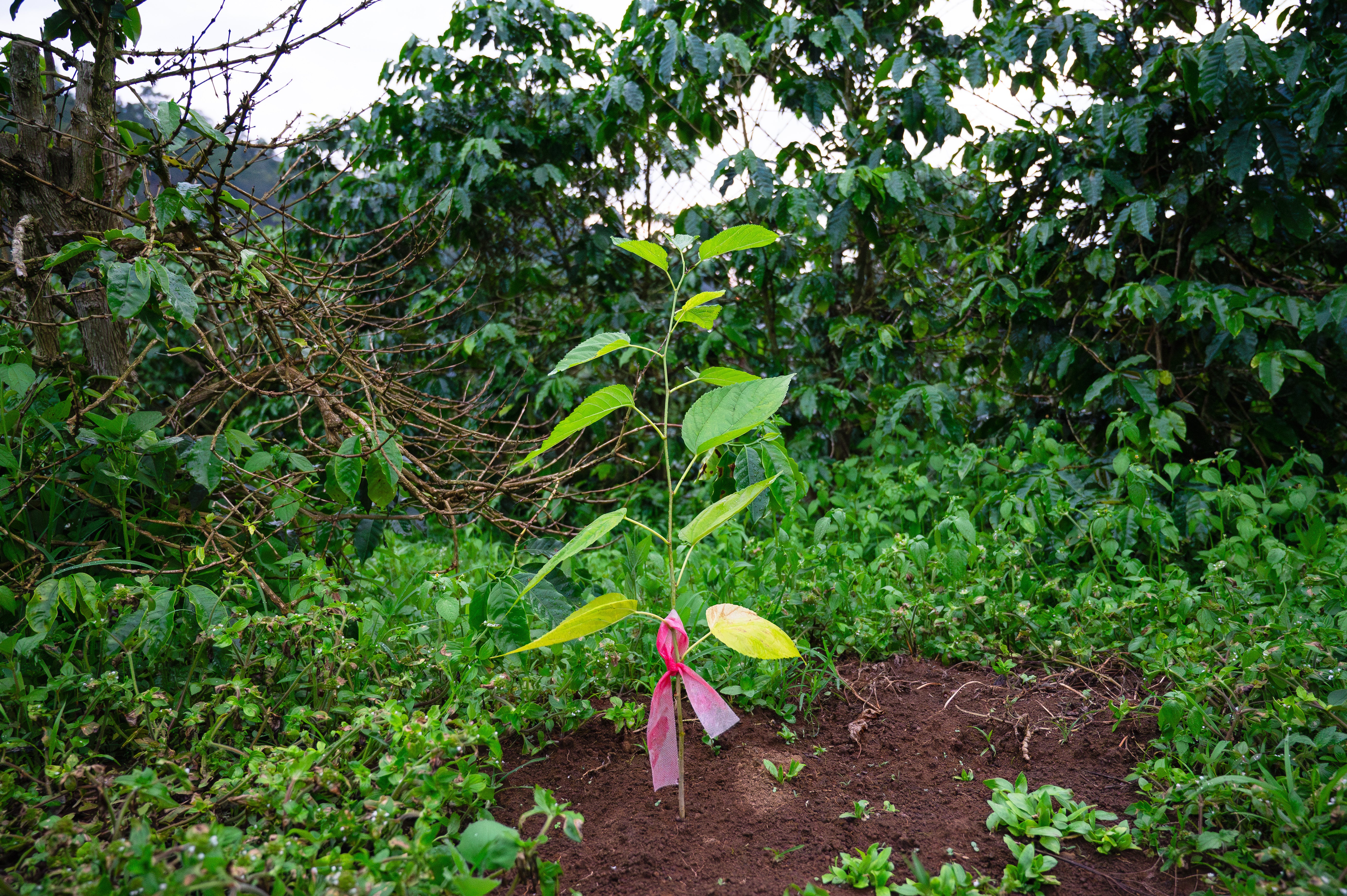
Storing Carbon Dioxide
Coffee bushes, which are fully grown after 9 years, store around 14 tonnes of carbon per hectare, whereas a coffee agroforest with diverse, mature trees can store up to 128 tonnes of carbon per hectare. That’s nine times as much. Curu’s new and growing agroforests will store 2x the carbon of a coffee monoculture over 10 years and 3 x as much carbon as a monoculture over 20 years.
Why is that important? Growing and drinking coffee emits greenhouse gases. A typical cup of coffee, using 7 grams of roasted coffee beans, creates around 59 grams of CO2e emissions. The majority of this, 32 grams, is from agriculture, mainly from the production of fertilisers and agrotoxins.
Curu’s growing agroforests store CO2 that monocultures do not. We estimate, based on a 2020 study by R. Solis, that our growing agroforests store enough CO2 to balance out the emissions of our entire supply chain, all the way from the farms to our perfectly roasted and packaged beans.
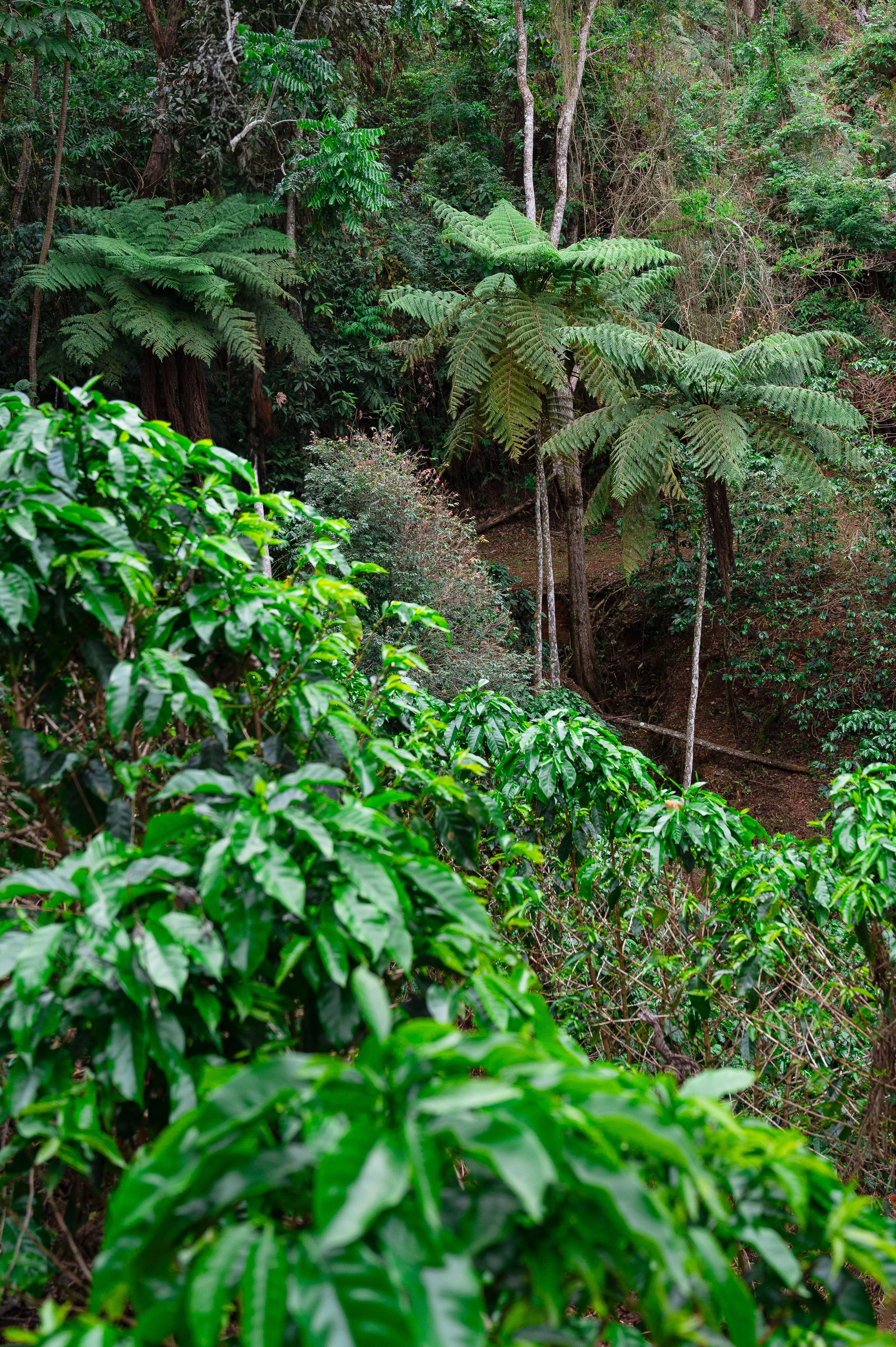
Biodiversity
Curus agroforests, with at least 100 trees of at least 11 different native species per hectare, create habitats in the soil and in the sky, where a coffee monoculture erodes the soil and leaves the sky empty.
Why is that important? The biggest coffee producer in the world is Brazil, where coffee is almost all grown in monocultures. These monocultures intentionally exclude biodiversity in areas that would naturally be covered with some of the most unique and at risk forests on our planet.
Curu’s agroforests work to connect natural forest fragments that are separated by coffee monocultures. Agroforests can create corridors for animals to travel between natural forest habitats, using tree canopies and groundcover to stay safe from predators.
Curu farms are between two nature reserves where the critically endangered Muriqui monkey lives. The population in each forest is too small to be viable over the medium term so these populations will die out from the effects of inbreeding if nothing changes.
If you buy enough coffee for us to partner with the farmers working in the 50 kilometers between these forests, then we can help these monkeys to survive in the wild. That’s a lot of coffee, but we’re hopeful and ambitious!
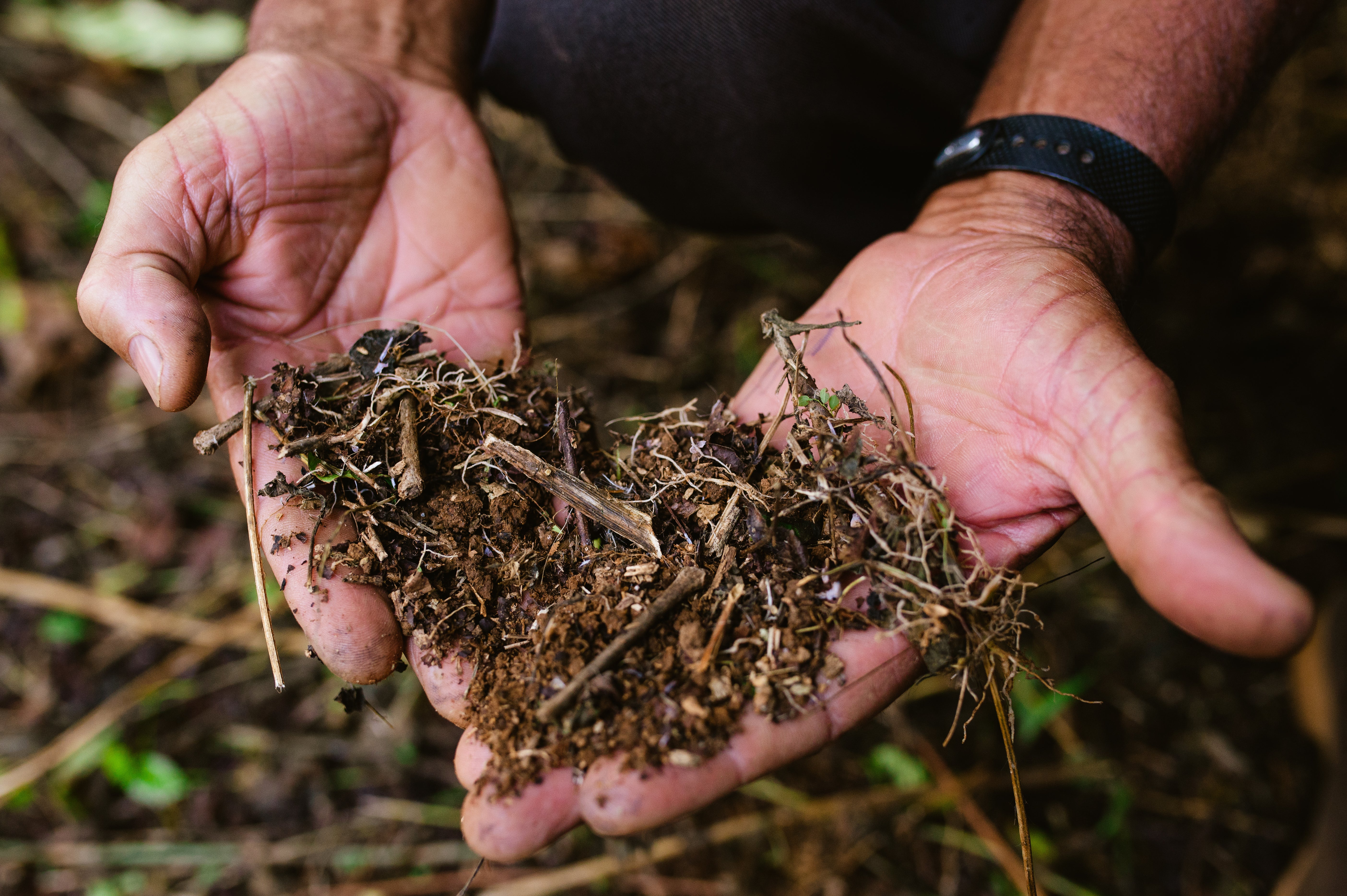
Healthy soil - the basis for life on Earth
A handful of healthy soil is alive with 10 to 100 million organisms that make the soil naturally fertile. Intensive monocultures exclude natural fertility cycles and cause soil to erode and degrade. Pesticides and fungicides needed to maintain the unnatural conditions in intensive farming damage life in the soil, which loses its natural fertility as time goes on.
Using herbicides to leave the ground free of plants that might compete with the crop also leaves the soil exposed so that rain washes the fertile topsoil away. This reduces the fertility of the land and damages streams and rivers.
Curu farmers are being certified agrotoxin free, with our first farmers being certified in 2025 - read more in our impact report. Not using agrotoxins leaves the soil covered with plants. This way, heavy tropical rains don’t wash topsoils away into rivers. The plants covering the ground, together with their roots, support other life. When they die, they decompose in the soil, they become compost, improving soil fertility. Some of it becomes carbon stored in the soil permanently. And all the organic matter and insect tunnels help soil to store water.
Trees like Ingá used in Curu’s agroforests harbour bacteria in their roots that fix nitrogen from the air into the soil, making the soil more fertile. These trees also help keep the coffee berry borer, whose larvae eats their way into coffee cherries, away.
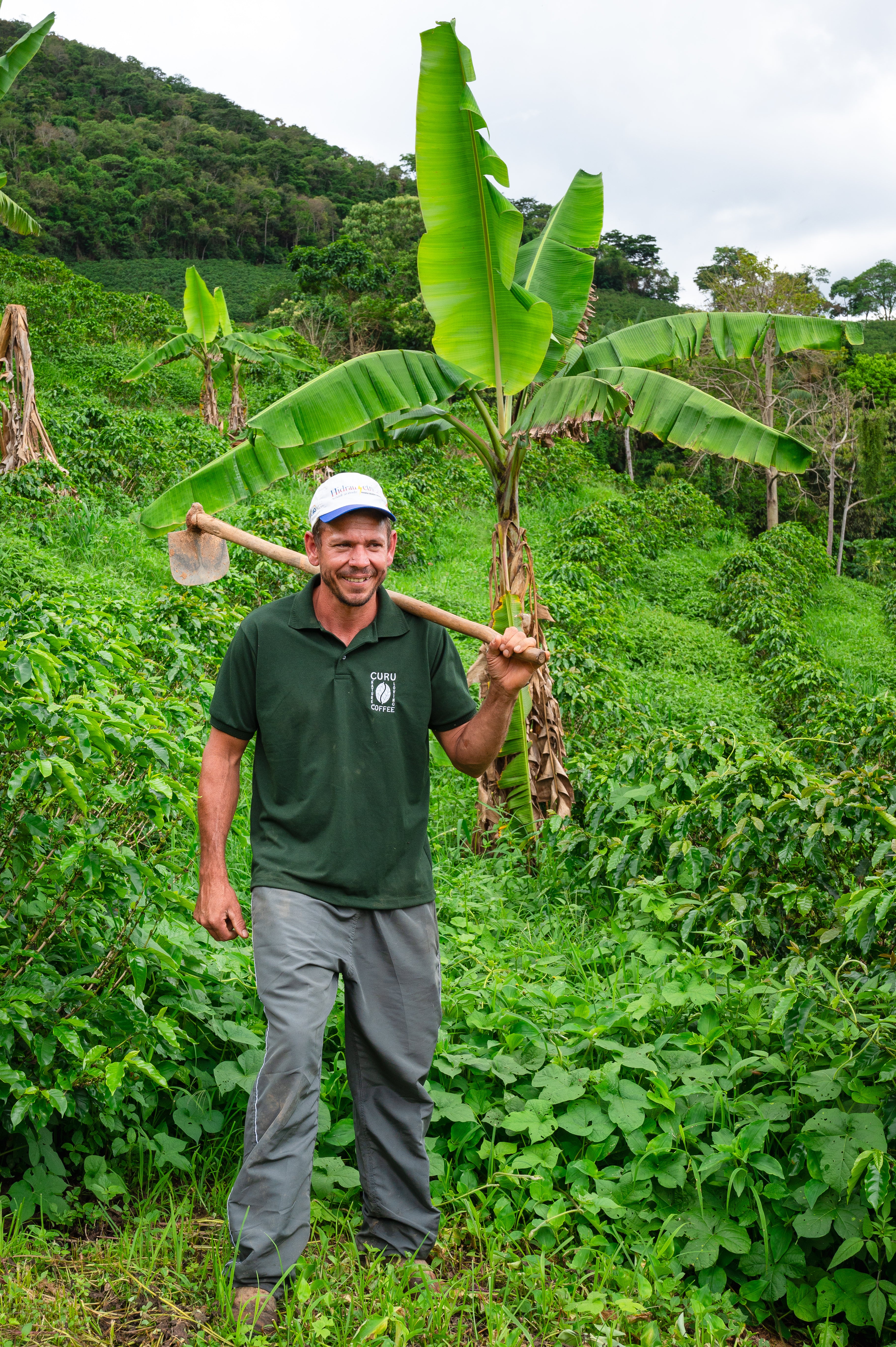
Mitigating the effects of climate change
Arabica coffee plants grow well in temperatures between 12 and 27 degrees centigrade and can handle droughts of up to three months. In recent years temperatures on Brazilian coffee farms have reached over 50 degrees centigrade and dry seasons have lasted six months. These are the effects of global warming, which are estimated to make more than half of the areas currently used for coffee farming unsuitable by 2050.
Agroforests work against climate change effects on coffee plantations and on farmers.
The trees provide shade and create a microclimate that buffers temperatures. On hot days, agroforests can be up to 8 degrees C cooler than a full sun plantation. On cold days, temperatures don’t fall so far in an agroforest as in a monoculture. This protects the sensitive arabica coffee plant.
Protected from the full sun, coffee plants lose less water through evaporation, helping them survive longer dry periods.
Healthy agroforest soils store more water compared to eroded monoculture soils, because the organic matter and tunneling life make the soil lose and able to hold water. The ground cover means more rainwater trickles into the soil rather than running off into streams and rivers. Because agroforests help coffee plants both lose less water and make more available in the soil, they help them live through the droughts that come with climate change. This keeps coffee plantations productive and reduces the risk that old forests will be cleared elsewhere for coffee agriculture.
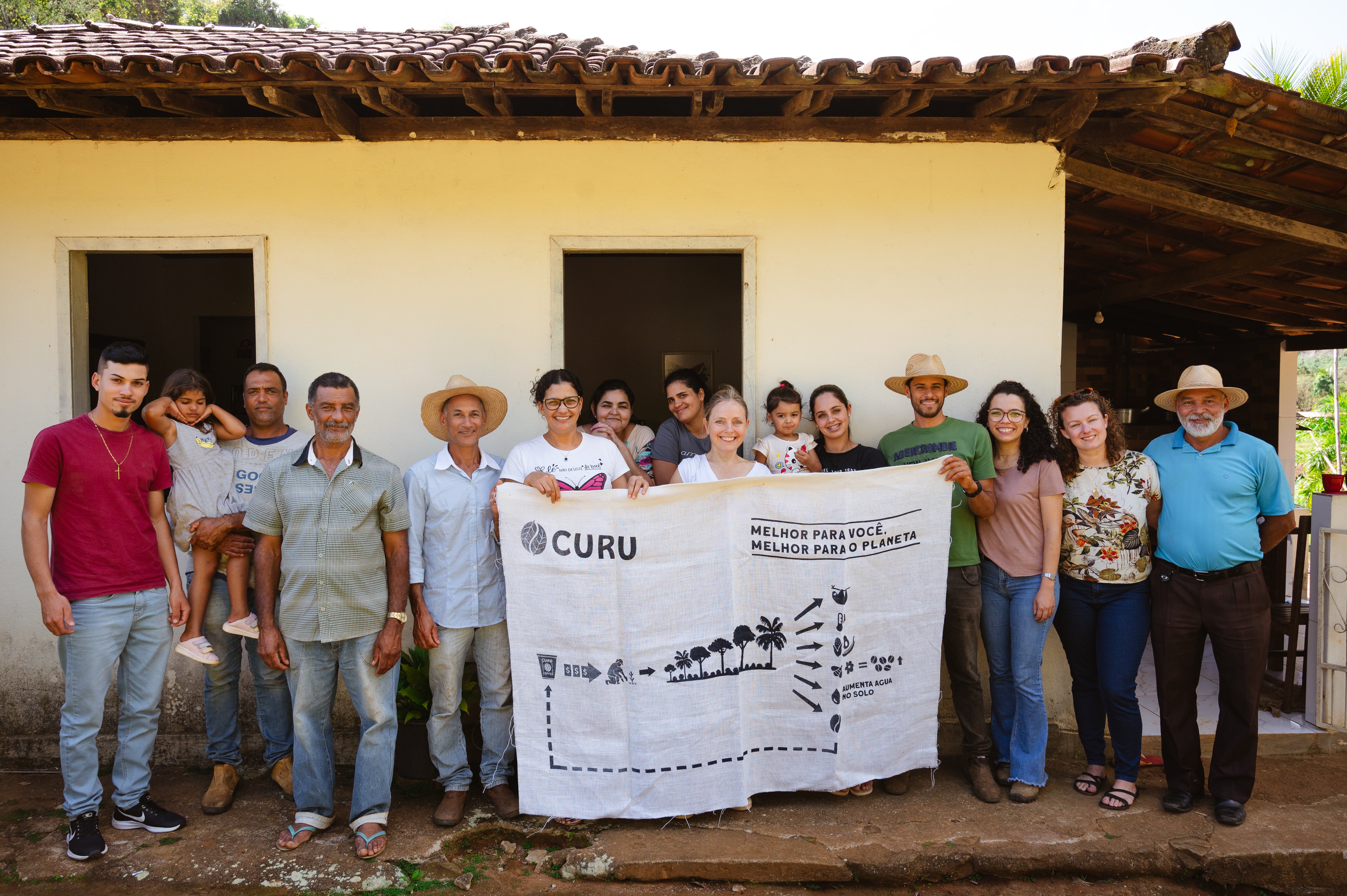
Protecting farmers
Coffee monocultures leave farmers at ever more risk from the increasingly unreliable weather. If for example the rains fail and flowering fails, the harvest fails. Farmers can be trapped in a vicious cycle with the poor harvest meaning not enough money for fertiliser, meaning reduced harvests the next year too. Agroforests help farmers by protecting coffee from climate change effects, and by diversifying production, so that farmers aren’t totally dependent on a single crop. Farmers can sell other products from their agroforests, products like fruits or wood.
Because coffee monocultures require less work to manage and are the most effective way of producing a single crop, agroforestry is still not being widely adopted, despite its benefits. Since those benefits meet global challenges, we’re here to change this with your help. We do all the work, so all you need to do is sit back and enjoy a great cup of coffee.
Coffee agroforests come in all different shapes and sizes
the more shady and diverse an agroforest is,the more biodiverse it will be, but also the less profitable. find out why here!
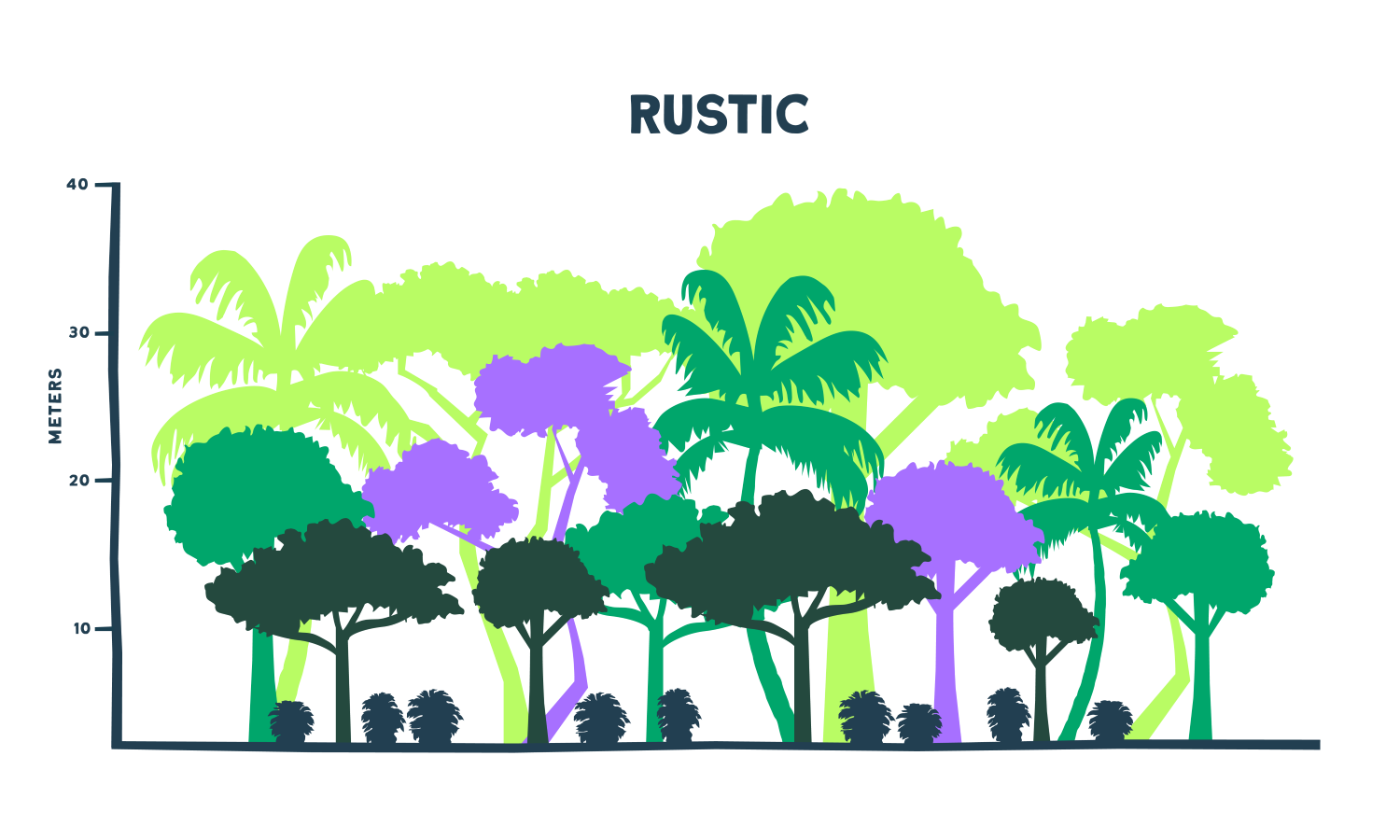
In rustic farms, coffee bushes are planted in a natural forest. This maintains a very high natural biodiversity, close to that of natural forests, but it's the least productive way of farming. Farmers typically do not use much or any fertilser or pesticide but they also produce very little coffee.
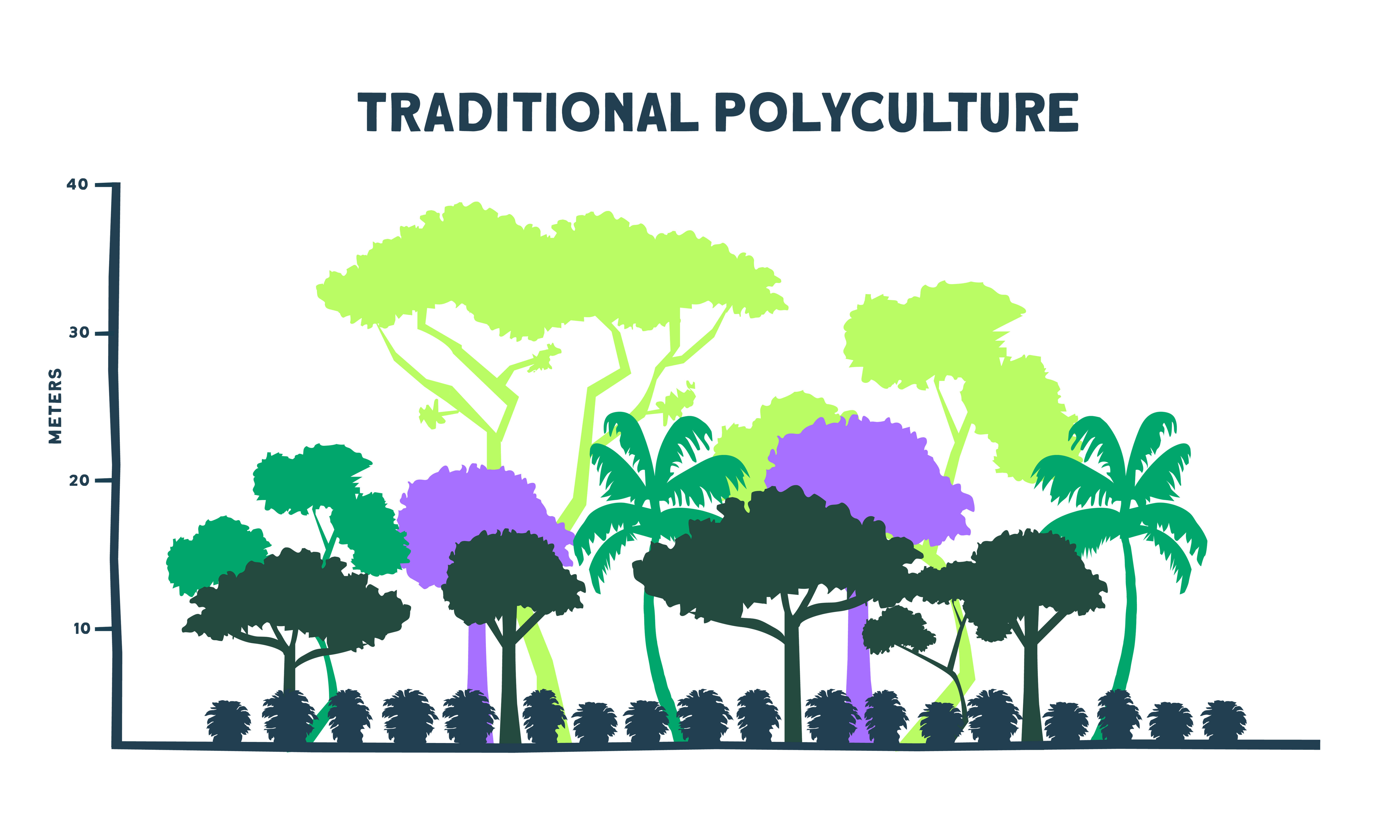
In traditional polycultures or "coffee gardens" trees and shrubs are planted for wood, fruit, medicines and of course, coffee. A variety of other produce such as vegetables and beans grow in less shady areas. These are typically small family plots. This is a labour intensive way to farm and can't be scaled easily because of the labour costs. If larger trees are left standing, these farms have a complex and multilayered tree canopy, which is great for biodiversity.
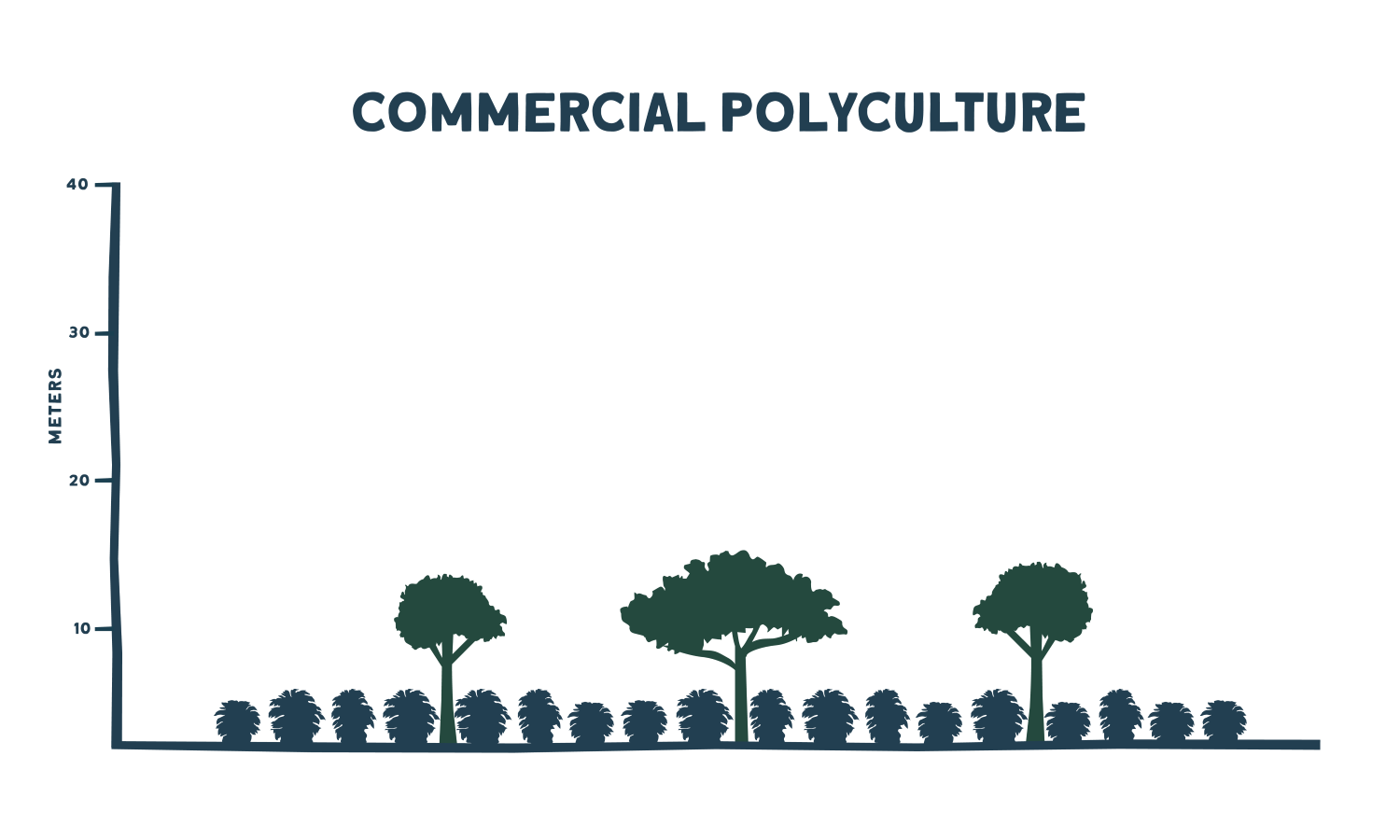
Commercial polycultures focus on maximising economic returns. These agroforests are designed with regular spacing of typically one or two species when planted with coffee. Planting avocado with coffee is a typical example of this kind of coffee agroforest. More farm inputs such as fertilisers are used to keep production higher. In commercial agroforests, species are chosen for their economic benefits and for their compatability with one another.
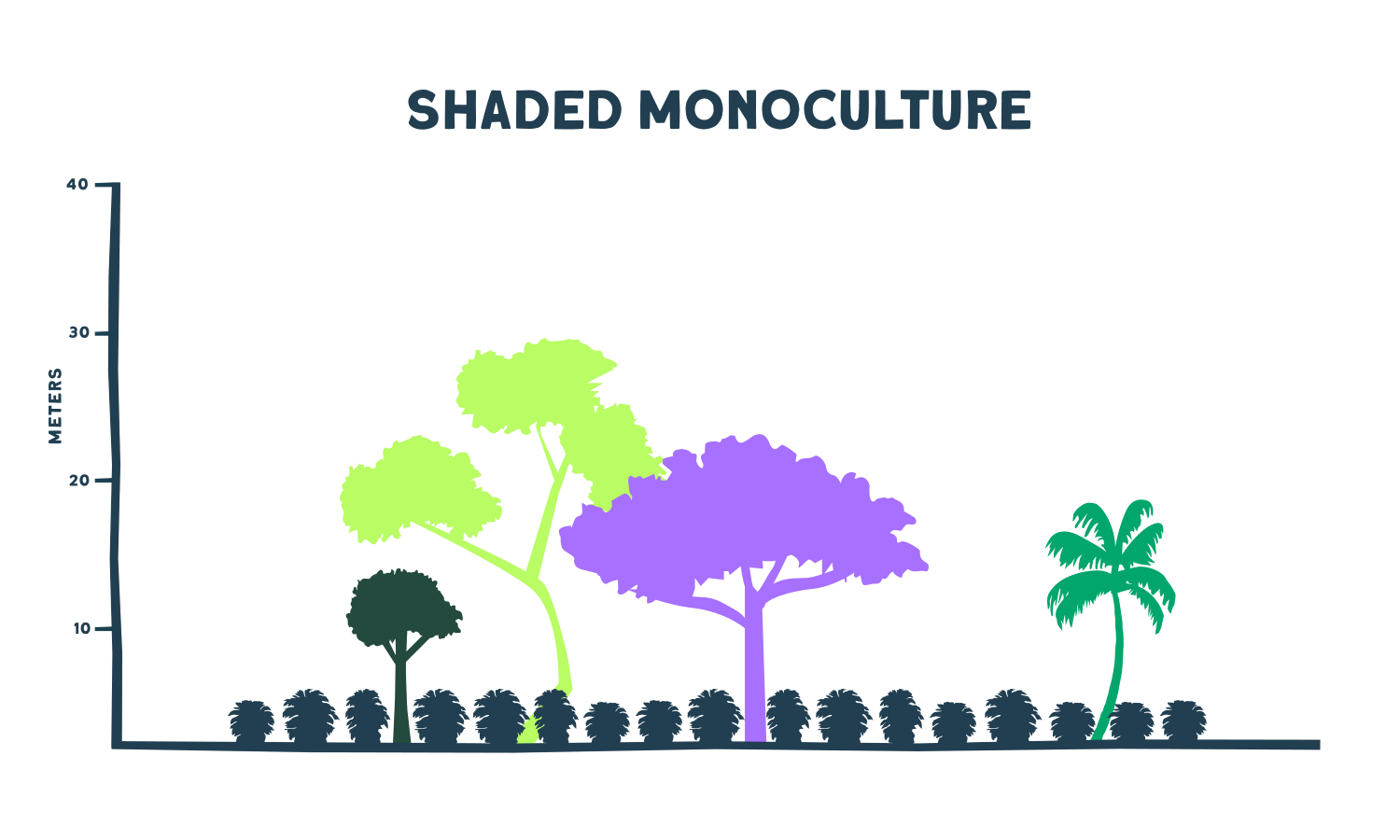
Shaded coffee monocultures focus on producing coffee as the single crop for sale, but include some trees for a variety of reasons. Sometimes, trees are deliberately planted for their benefits. Fruit or wood trees are planted for use at home, or Ingá is planted to increase soil fertility and pest resistence. Sometimes coffee is planted under existing trees that are left because the farmer sees a benefit such as shade on hot days, or to support bees that help increase coffee yields, for fruits or wood for personal use, or just for their beauty.
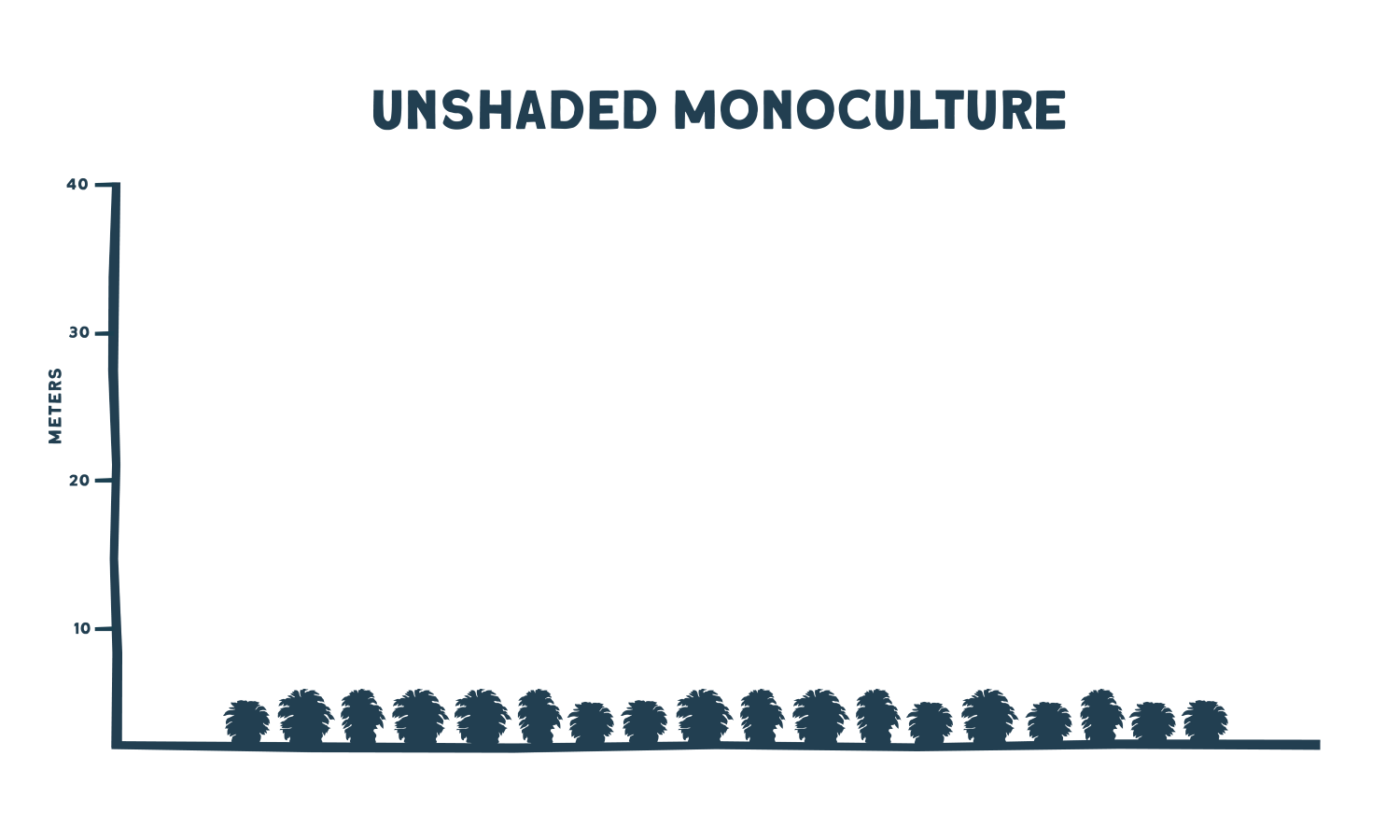
In unshaded monocultures coffee bushes grow in full sun. These systems are designed to be as productive as possible. High levels of fertilisers, herbicides and pesticides are needed to maintain these farming systems. This is the simplest and usually the most profitable way to farm. It also damages soil, excludes biodiversity and leaches chemicals used on the farm into rivers, damaging both rivers and the oceans they run into.
Agroforests don't always fit neatly into just one of the categories we just described. But it's a good framework to help think about the differences between different kinds of agroforest.
If forest farming is so great why don´t more people do it?
While the benefits are clear - healthier soils, increased biodiversity, and climate protection - farmers face massive hurdles
Most farmers are focussed on using their land as efficiently as possible to make the best possible profit, since that's their income. For a farmer using monoculture farming, which is typically the most proftiable way to farm, the idea of planting a tree on their farm is like the idea of planting a tree in a car factory. It seems a fairly stupid thing to do.
